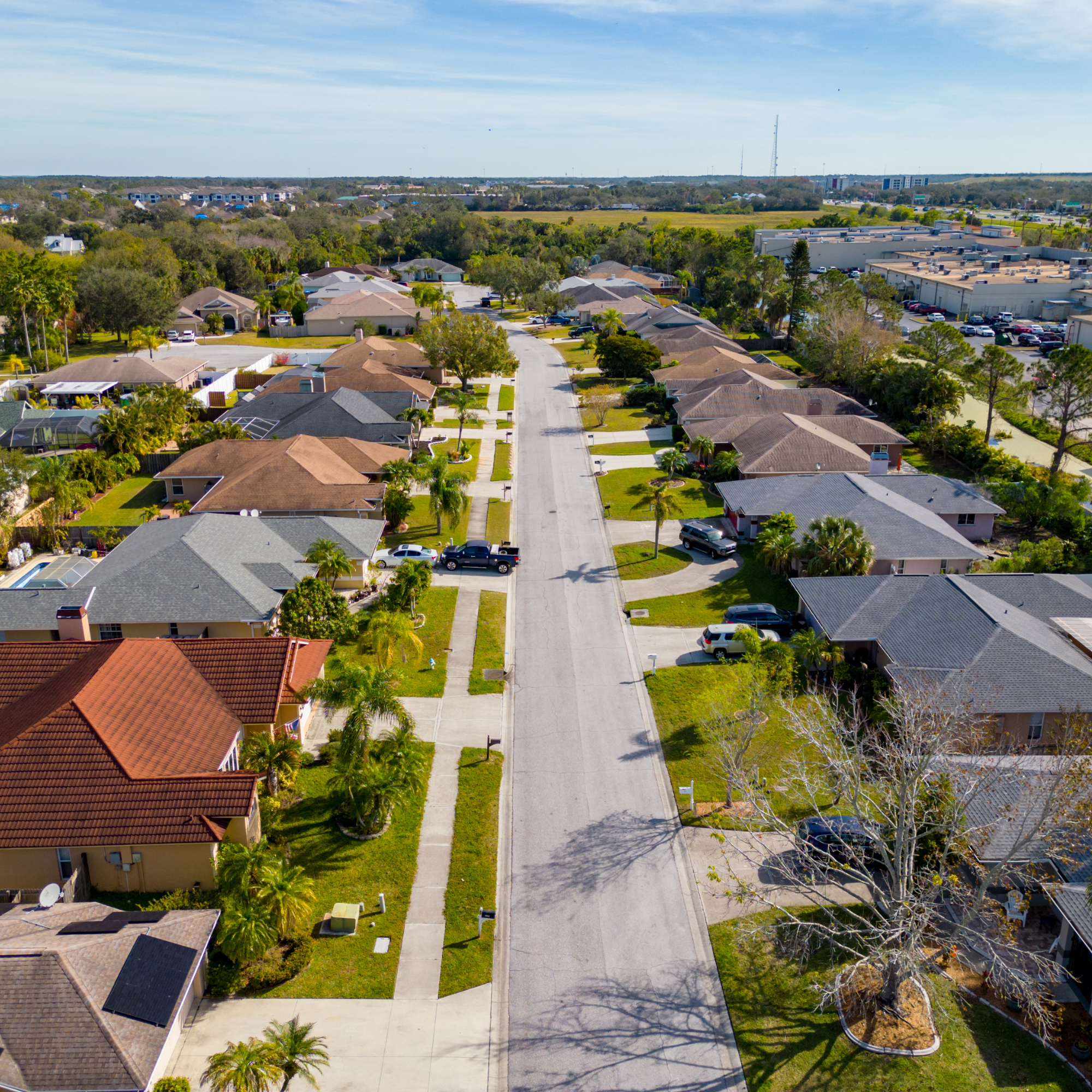Eviction Trends in the First Half of 2025: Florida
Evictions have remained a critical housing issue in 2025, as pandemic-era protections and aid have receded and housing costs continue to strain renters. This report analyzes eviction trends from January through June 2025 in three states – Michigan, Texas, and Florida – highlighting state-level data, contributing factors (such as market changes, policy shifts, inflation, and economic conditions), and comparisons to prior years. Visual charts and tables are included to illustrate key data. Each state is addressed in a separate section for clarity.

Florida: Record Highs and Early Signs of Stabilization
Eviction Filing Volume
Florida experienced unprecedented numbers of evictions in 2022 and 2023, and while filings remained extremely high in the first half of 2025, there are tentative signs that the trend has plateaued. Statewide data from the University of Florida Shimberg Center shows that 2023 saw about 151,000 eviction filings in Florida, the most in over a decade. This was a 4% increase over 2022, which itself had seen a massive jump as pandemic protections ended. (Florida’s eviction filings in 2022 were ~145,000, up 54% from 2021, effectively returning to or exceeding 2019 levels.)
In 2024, Florida recorded 146,856 eviction filings – about a 3% decline from the 2023 peak. This slight dip marked the first year-over-year improvement since the pandemic, hinting at stabilization. Still, that 2024 total was extraordinarily high by historical standards (for reference, Florida had ~128,750 filings in 2019 before the pandemic). In other words, 2024’s filings were 14% higher than 2019’s, and 2023’s were about 17% higher – indicating that the state’s evictions not only rebounded post-COVID but surpassed pre-COVID volumes.
Figure: Eviction case filings in Central Florida counties for 2023 vs. 2024. Seven counties (Volusia, Brevard, Osceola, Lake, Marion, Sumter, Flagler) hit record-high filings in 2024 (blue bars exceed gray bars). Orange and Seminole counties saw slight declines in 2024 after peaking in 2023 (their gray bars are higher). This regional data reflects the broader statewide trend: 2024 evictions remained near all-time highs, with only a modest dip in a few areas.
Drilling down, many parts of Florida set all-time records in 2022–2023. In Central Florida, all nine counties in the Orlando metro area hit record-high eviction filing numbers in 2023. The momentum carried into 2024 for most: seven of those counties reached new record highs in 2024 as well, surpassing their 2023 figures. Only Orange County (Orlando proper) and Seminole County fell slightly in 2024, logging their second-highest year on record (just below 2023’s peak). For example, Orange County saw ~16,080 filings in 2023 and 15,039 in 2024【40†image】.
Seminole went from about 4,047 down to 3,842. These modest declines in two large counties contributed to the statewide dip in 2024. Elsewhere in Florida, however, the numbers continued to climb. South Florida’s populous counties (Miami-Dade, Broward, Palm Beach) also saw very high eviction activity, though Miami-Dade’s eviction rate is lower relative to its huge renter population. A study noted that Duval County (Jacksonville) has become the “eviction capital” of Florida, with an eviction filing rate nearly double that of Miami-Dade. Duval averaged about 7.1 eviction filings per 1,000 renter households per month in 2022 (which annualizes to over 8.5% of renter households evicted), the highest in the state. That pattern continued in 2023. Jacksonville’s high filings helped push totals upward.
As of the first half of 2025, comprehensive counts are not yet published, but early indications suggest Florida’s eviction filings remain near the 2023–2024 high plateau. For instance, in Central Florida through Q1 2025, Orange and Seminole Counties were still on track for very high totals (though not exceeding their 2023 peak). An analysis in March 2025 noted that evictions in the Orlando metro area are about 40% higher than pre-pandemic levels on average.
Counties like Osceola and Sumter have 70% more cases than in 2019. Local officials observed a possible “slow decrease” in some areas in early 2025 compared to the sharp spikes of prior years, but the volumes are still historically high. In summary, Florida’s eviction trend in early 2025 is one of persistently elevated activity, with marginal improvement (a slight downtrend) in a few jurisdictions but continued increases in others.
Comparisons to Previous Years
The pattern from 2019 to 2024 in Florida is illustrative: eviction filings plummeted in 2020 (only ~82,500 that year under moratoriums), then rebounded aggressively. By 2022, filings not only recovered but exceeded the late-2010s levels by a wide margin. 2023 was the worst year in recent memory for evictions in Florida, breaking a 10-year record in many places. Indeed, Orange County’s 2022 total had already broken its prior record, and 2023 matched or exceeded it.
This sustained high through 2023 led the Eviction Lab to label the situation part of a national “eviction epidemic”. The 3% dip in 2024 was noteworthy as the first sign of relief. It suggests that the eviction wave may have crested in 2023. Some factors (described below) like slowing rent inflation and population adjustments could be contributing to this plateau. However, it’s too early to declare a reversal. As of mid-2025, Florida’s evictions remain about 15% higher than in the last pre-COVID year (2019) and roughly double the levels seen during the pandemic eviction moratorium period. Any comparison to previous years must emphasize that current levels are extraordinarily high by historical standards, even if the exponential growth has moderated.
Contributing Factors
Florida’s eviction crisis has been driven by several key factors, many of which parallel national trends but to a heightened degree in Florida:

- Skyrocketing Rents and Housing Costs
Florida has been at the forefront of the nation’s rent increases. Fueled by rapid population growth and in-migration, rents in many Florida markets have spiked dramatically since 2020. For example, Jacksonville renters saw rent hikes approaching 30% from 2020 to 2023. The Orlando metro and Tampa Bay also saw double-digit percent rent growth over multiple years. This has led to severe affordability problems – Florida now has one of the highest rates of cost-burdened renters in the country, with nearly 90% of extremely low-income renters in the Orlando area paying more than half of their income toward housing.
Such rent burden means a vast number of households are living paycheck to paycheck. Florida also has high costs for utilities and insurance that further strain budgets. When rents jumped, many tenants simply couldn’t keep up, resulting in rising evictions. Even though rent growth has cooled somewhat by 2024 (in some places rents even leveled off or dipped slightly), the rent levels remain far above 2019 levels. Without comparable income growth, thousands of Florida renters remain on the brink of eviction. In short, the post-pandemic housing price boom in Florida set the stage for record evictions, as renting families struggled to absorb huge rent increases.
- Population Growth and Migration
Florida’s population has grown substantially in the past few years, including through domestic migration. This growth creates more demand for housing and often more competition for rentals. In fast-growing counties (Osceola, Flagler, etc.), part of the increase in evictions is simply that there are more renters than before. Local analysis in Central Florida found that after accounting for population inflows, the percentage increase in evictions from 2019 to 2024 was a bit lower – e.g., Osceola County’s raw eviction filings were 71% higher than 2019, but adjusting for its growing renter population, the increase was ~48%. Similarly, Sumter County’s raw evictions up 70% translated to ~32% when factoring in growth.
This indicates that population growth is one contributing factor behind Florida’s higher evictions (more people renting = more potential evictions). However, it’s not the sole factor – even in stable population areas, evictions rose due to rent and economic issues. In some cases, newcomers with higher incomes have bid up rents, indirectly displacing lower-income long-time residents. Florida’s desirability has thus had a side effect: housing scarcity and higher rents that yield more evictions.
- End of Pandemic Protections and Aid
Like elsewhere, Florida benefited from a federal eviction moratorium (which lasted through July 2021) and significant rental assistance funds (Florida received hundreds of millions in ERA funds). During 2020–2021, these measures “buffered” the housing crisis, preventing many evictions. Those buffers are now gone. By late 2021, Florida’s state-level moratorium ended, and by mid-2022 most rental aid funds (distributed via programs like OUR Florida) were spent.
Once these ended, the true scope of Florida’s housing affordability crisis became visible. As one homelessness official put it, “those buffers are gone, and we are now seeing the realities of our housing market”, which has meant a surge in evictions and resulting homelessness. Essentially, the expiration of emergency measures in 2022 unleashed a backlog of evictions and allowed filings to accelerate to record highs in 2023. With no ongoing rental assistance program in 2025 (Florida’s programs were temporary), there is little relief for tenants with arrears, and eviction filings have remained high.
- Corporate Landlords and Screening Practices
A notable driver in Florida, as research shows, is the prevalence of corporate ownership of rental properties, especially in certain markets. In Jacksonville, for instance, 72% of multifamily rental units are owned by real estate investment firms or LLCs. Studies by the University of North Florida found that these corporate landlords file evictions at much higher rates than smaller “mom-and-pop” landlords. The business model often involves aggressive rent increases and quick evictions – if a tenant can’t immediately meet a higher rent or fee, the corporate owners move to evict and bring in someone new at the higher rent.
This “financialization” of housing (treating homes purely as investment assets) has taken hold in Florida’s hot housing market. It leads to less leniency for tenants: unlike a local landlord who might negotiate, a property manager for an investment firm often files for eviction automatically after a missed payment. Additionally, Florida has no law preventing landlords from denying applicants with prior eviction records, and many do so. Thus, once a tenant has an eviction filing (even if they weren’t formally evicted), it becomes harder to find new housing – locking some families into instability. Advocates note this practice effectively “blacklists” tenants and can indirectly drive up repeat evictions or homelessness. Florida courts also make records public, which contributes to this cycle. In 2025, there is discussion (but not yet action) on possible measures like sealing eviction records (similar to what Michigan is proposing) to mitigate this.
- Legal Framework and Lack of Tenant Protections
Florida’s eviction laws allow relatively swift removal for nonpayment. A landlord can terminate a lease for nonpayment with only a 3-day notice. If the tenant doesn’t pay in that window, an eviction lawsuit can be filed, and a judgment and writ of possession can follow within a few weeks if the tenant does not respond or contest. Florida does not mandate any grace periods, eviction diversion, or right to counsel.
Some local jurisdictions (Miami-Dade, Orange County, etc.) have adopted a “Tenant’s Bill of Rights” ordinance that provides minor protections (such as requiring notice of late fees, prohibiting source-of-income discrimination, etc.), but these do not prevent or delay evictions significantly. Notably, Duval County (Jacksonville) was the only major metro county without a Tenant’s Bill of Rights as of 2024, which partly explains its exceptionally high eviction rate. In general, Florida law favors landlords – for instance, even if a tenant comes up with the owed rent after an eviction case is filed, Florida allows the eviction to proceed unless all back rent and fees are paid into the court registry almost immediately. There is also no statewide moratorium power; an attempt in Orange County to impose temporary rent control in 2022 was blocked by state law. The state preempts any local rent control. Without policy interventions, Florida’s evictions are mostly left to market forces.
The slight decline in evictions in 2024 suggests the market might be self-correcting a bit (perhaps landlords finding stable long-term tenants after an initial churn), but otherwise the legal system provides little friction to eviction filings. Over half of eviction cases in Florida result in actual removal by law enforcement – in six central counties, an average 59% of filings ended with a sheriff executing a writ of possession. (This is a far higher execution rate than Michigan’s ~2%, for example, indicating Florida’s filings translate to displacement much more often.) In some counties, the executed eviction rate is even higher – Orange County sees about 70% of filings result in a writ of possession carried out【42†look at table】. This high conversion rate underscores how Florida’s legal process enables landlords to reclaim properties quickly and routinely.
- Economic Pressure on Tenants
Florida’s economy, while strong in job growth, also comes with a high cost of living. Inflation in metro areas like Tampa and Miami was among the highest in the U.S. in 2022. Costs for necessities such as gasoline, electricity, and groceries rose, compounding the rent burden. Meanwhile, wage growth for low-wage jobs (hospitality, retail – significant sectors in Florida) has been modest.
As one local expert noted in Brevard County, “40% of residents are one paycheck away from losing housing… costs are rising but wages are not”, leaving many families financially fragile. This economic reality means any minor income disruption leads to missed rent, and with Florida’s lack of mandatory grace periods, evictions quickly follow. The pandemic also left some households with debt or credit issues that have persisted, affecting their housing stability in 2023–2025.
Impacts and Outlook
The high level of evictions in Florida has contributed to increasing homelessness and housing instability. Shelters and homeless service networks in Central Florida report being “exhausted” by the volume of newly evicted families seeking help. Martha Are, CEO of the Homeless Services Network of Central Florida, noted that evictions are “adding to the housing crisis” and leading to more people becoming homeless. An eviction on record makes it nearly impossible for a household to rent another home and even disqualifies them from Section 8 housing vouchers.

This implies long-term consequences: the 2022–2024 wave of evictions could translate into a protracted homelessness challenge if those tenants cannot secure new housing. Florida’s Council on Homelessness 2025 report explicitly links rising evictions and foreclosures to the risk of increased homelessness, calling them “strong predictors” of future homelessness. The report notes that while Florida’s overall homeless count has trended down in recent years (due to rapid re-housing and other initiatives), the ongoing affordable housing shortage for Extremely Low-Income households is a major concern. In response, Florida enacted the 2023 Live Local Act, a law that invests in affordable housing development and incentivizes mixed-income housing construction. Over time, this may expand housing supply and ease rent pressures. However, those are longer-term solutions; in the short term (2025), Florida did not implement new eviction-specific prevention programs.
One positive development is that rent escalation has cooled: some Florida markets actually saw slight rent declines in late 2024 into 2025 as a flood of new apartment units came online (especially in Miami and Tampa). If rent prices stabilize or drop while employment stays strong, fewer new eviction filings might occur. The 3% drop in 2024 filings could be an early sign of this effect – landlords weren’t raising rent as aggressively in 2024, so fewer renters were pushed to breaking point. Additionally, awareness of the eviction crisis has grown. Florida courts and charities have hosted “eviction clinics” and outreach to inform tenants of their rights (for instance, Broward County launched a program connecting tenants to pro bono lawyers, and Miami-Dade ramped up a Right-to-Counsel pilot). While these are limited in reach, they may help incrementally.
In conclusion, Florida’s first half of 2025 is marked by an extraordinarily high rate of evictions – roughly 5.1 eviction filings per 1,000 renter households per month statewide (as of 2024 data)flhousingdata.shimberg.ufl.edu, which is higher than pre-pandemic. The state set records in 2022–2023 and is now slightly below those peaks but still far above normal. Key drivers include the lingering affordability crisis (rents up ~15–30% since 2019 in many areas), the end of emergency aid, population pressures, and a legal regime that allows quick evictions with few tenant protections. There are hints of improvement – a modest decline in filings in 2024 and early 2025 in some counties – likely due to market adjustments (rent stabilization and perhaps tenants doubling up or leaving high-cost areas).
However, Florida’s evictions remain at crisis levels, and without significant policy intervention or a dramatic increase in affordable housing, many families will continue to face displacement. Stakeholders in Florida are now recognizing that preventing evictions is critical to avoiding greater social costs: research shows evictions cost governments millions in shelter, healthcare, foster care, and other expenses. This recognition may spur more preventive measures in the future. As of mid-2025, though, Florida, like Texas, is navigating an eviction environment that is worse than it has been in decades, tempered only slightly by recent economic and policy shifts.
Sources:
- Florida Housing Data Clearinghouse (Univ. of Florida Shimberg Center) eviction statistics
- Central Florida Public Media analysis of regional evictions
- Jacksonville Today/News4Jax on Jacksonville’s eviction rate
- Florida DCF Council on Homelessness 2025 Report
- Central Florida advocates quotes
Start the Conversation
"*" indicates required fields

